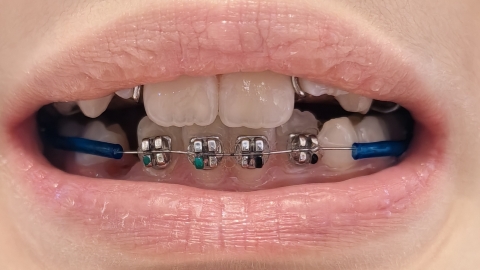Can gum recession be corrected by straightening teeth?
In general, whether orthodontic treatment can be performed in the presence of gingival recession depends on the severity and control of the condition. Orthodontics may proceed if the gum recession is mild and inflammation has been controlled; however, if the recession is severe or the inflammation remains unstable, orthodontic treatment should be postponed until gum problems are properly treated. Detailed analysis is as follows:

If the gingival recession is mild, with only slight gum tissue loss, no significant alveolar bone resorption, and periodontal inflammation effectively controlled after treatment—meaning the gums are no longer progressively receding—orthodontic treatment may be considered following professional evaluation. During orthodontics, gentle forces should be used to avoid additional irritation to the gums.
When gingival recession is severe, accompanied by extensive alveolar bone loss, obvious tooth mobility, or active periodontal inflammation characterized by redness, swelling, and bleeding, orthodontic treatment is not advisable at this stage. Proceeding with orthodontics under these conditions may worsen gum recession and bone loss, increase tooth mobility, or even lead to tooth loss. It is essential first to undergo periodontal therapy to control inflammation and stabilize the condition of the gums and alveolar bone before reassessing suitability for orthodontic treatment.
Routinely, maintain good oral hygiene by brushing teeth twice daily, using dental floss to clean interdental spaces, and scheduling regular periodontal checkups and maintenance visits to prevent further progression of gum recession. Oral hygiene must be especially rigorous during orthodontic treatment, along with regular follow-up appointments.




